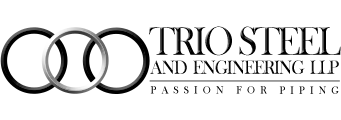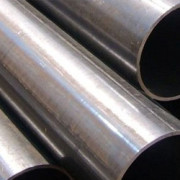| EFW Pipe Grade |
Plate Used |
Plate Grade |
Heat Treatment |
| ASTM A671 GR. CA45 EFW pipes CL12 |
Plain Carbon |
A 285/A 285M GRADE A |
None |
| ASTM A671 GR. CA50 EFW pipes CL12 |
Plain Carbon |
A 285/A 285M GRADE B |
None |
| ASTM A671 GR. CA55 EFW pipes CL12 |
Plain Carbon |
A 285/A 285M GRADE C |
None |
| ASTM A671 GR. CB55 EFW pipes CL12 |
Plain Carbon, Killed |
A515/A515M GRADE 55 |
None |
| ASTM A671 GR. CB60 EFW pipes CL12 |
Plain Carbon, Killed |
A515/A515M GRADE 60 |
None |
| ASTM A671 GR. CB65 EFW pipes CL12 |
Plain Carbon, Killed |
A515/A515M GRADE 65 |
None |
| ASTM A671 GR. CB70 EFW pipes CL12 |
Plain Carbon, Killed |
A515/A515M GRADE 70 |
None |
| ASTM A671 GR. CC55 EFW pipes CL12 |
Plain Carbon, Killed, Fine Grained |
A516/A516M GRADE 55 |
None |
| ASTM A671 GR. CC60 EFW pipes CL12 |
Plain Carbon, Killed, Fine Grained |
A516/A516M GRADE 60 |
None |
| ASTM A671 GR. CC65 EFW pipes CL12 |
Plain Carbon, Killed, Fine Grained |
A516/A516M GRADE 65 |
None |
| ASTM A671 GR. CC70 EFW pipes CL12 |
Plain Carbon, Killed, Fine Grained |
A516/A516M GRADE 70 |
None |
| ASTM A671 GR. CA45 EFW pipes CL22 |
Plain Carbon |
A 285/A 285M GRADE A |
Stress Relieved |
| ASTM A671 GR. CA50 EFW pipes CL22 |
Plain Carbon |
A 285/A 285M GRADE B |
Stress Relieved |
| ASTM A671 GR. CA55 EFW pipes CL22 |
Plain Carbon |
A 285/A 285M GRADE C |
Stress Relieved |
| ASTM A671 GR. CB55 EFW pipes CL22 |
Plain Carbon, Killed |
A515/A515M GRADE 55 |
Stress Relieved |
| ASTM A671 GR. CB60 EFW pipes CL22 |
Plain Carbon, Killed |
A515/A515M GRADE 60 |
Stress Relieved |
| ASTM A671 GR. CB65 EFW pipes CL22 |
Plain Carbon, Killed |
A515/A515M GRADE 65 |
Stress Relieved |
| ASTM A671 GR. CB70 EFW pipes CL22 |
Plain Carbon, Killed |
A515/A515M GRADE 70 |
Stress Relieved |
| ASTM A671 GR. CC55 EFW pipes CL22 |
Plain Carbon, Killed, Fine Grained |
A516/A516M GRADE 55 |
Stress Relieved |
| ASTM A671 GR. CC60 EFW pipes CL22 |
Plain Carbon, Killed, Fine Grained |
A516/A516M GRADE 60 |
Stress Relieved |
| ASTM A671 GR. CC65 EFW pipes CL22 |
Plain Carbon, Killed, Fine Grained |
A516/A516M GRADE 65 |
Stress Relieved |
| ASTM A671 GR. CC70 EFW pipes CL22 |
Plain Carbon, Killed, Fine Grained |
A516/A516M GRADE 70 |
Stress Relieved |
| ASTM A671 GR. CA45 EFW pipes CL32 |
Plain Carbon |
A 285/A 285M GRADE A |
Normalized |
| ASTM A671 GR. CA50 EFW pipes CL32 |
Plain Carbon |
A 285/A 285M GRADE B |
Normalized |
| ASTM A671 GR. CA55 EFW pipes CL32 |
Plain Carbon |
A 285/A 285M GRADE C |
Normalized |
| ASTM A671 GR. CB55 EFW pipes CL32 |
Plain Carbon, Killed |
A515/A515M GRADE 55 |
Normalized |
| ASTM A671 GR. CB60 EFW pipes CL32 |
Plain Carbon, Killed |
A515/A515M GRADE 60 |
Normalized |
| ASTM A671 GR. CB65 EFW pipes CL32 |
Plain Carbon, Killed |
A515/A515M GRADE 65 |
Normalized |
| ASTM A671 GR. CB70 EFW pipes CL32 |
Plain Carbon, Killed |
A515/A515M GRADE 70 |
Normalized |
| ASTM A671 GR. CC55 EFW pipes CL32 |
Plain Carbon, Killed, Fine Grained |
A516/A516M GRADE 55 |
Normalized |
| ASTM A671 GR. CC60 EFW pipes CL32 |
Plain Carbon, Killed, Fine Grained |
A516/A516M GRADE 60 |
Normalized |
| ASTM A671 GR. CC65 EFW pipes CL32 |
Plain Carbon, Killed, Fine Grained |
A516/A516M GRADE 65 |
Normalized |
| ASTM A671 GR. CC70 EFW pipes CL32 |
Plain Carbon, Killed, Fine Grained |
A516/A516M GRADE 70 |
Normalized |
| ASTM A672 GR. CA45 EFW pipes CL12 |
Plain Carbon |
A 285/A 285M GRADE A |
None |
| ASTM A672 GR. CA50 EFW pipes CL12 |
Plain Carbon |
A 285/A 285M GRADE B |
None |
| ASTM A672 GR. CA55 EFW pipes CL12 |
Plain Carbon |
A 285/A 285M GRADE C |
None |
| ASTM A672 GR. CB55 EFW pipes CL12 |
Plain Carbon, Killed |
A515/A515M GRADE 55 |
None |
| ASTM A672 GR. CB60 EFW pipes CL12 |
Plain Carbon, Killed |
A515/A515M GRADE 60 |
None |
| ASTM A672 GR. CB65 EFW pipes CL12 |
Plain Carbon, Killed |
A515/A515M GRADE 65 |
None |
| ASTM A672 GR. CB70 EFW pipes CL12 |
Plain Carbon, Killed |
A515/A515M GRADE 70 |
None |
| ASTM A672 GR. CC55 EFW pipes CL12 |
Plain Carbon, Killed, Fine Grained |
A516/A516M GRADE 55 |
None |
| ASTM A672 GR. CC60 EFW pipes CL12 |
Plain Carbon, Killed, Fine Grained |
A516/A516M GRADE 60 |
None |
| ASTM A672 GR. CC65 EFW pipes CL12 |
Plain Carbon, Killed, Fine Grained |
A516/A516M GRADE 65 |
None |
| ASTM A672 GR. CC70 EFW pipes CL12 |
Plain Carbon, Killed, Fine Grained |
A516/A516M GRADE 70 |
None |
| ASTM A672 GR. CA45 EFW pipes CL22 |
Plain Carbon |
A 285/A 285M GRADE A |
Stress Relieved |
| ASTM A672 GR. CA50 EFW pipes CL22 |
Plain Carbon |
A 285/A 285M GRADE B |
Stress Relieved |
| ASTM A672 GR. CA55 EFW pipes CL22 |
Plain Carbon |
A 285/A 285M GRADE C |
Stress Relieved |
| ASTM A672 GR. CB55 EFW pipes CL22 |
Plain Carbon, Killed |
A515/A515M GRADE 55 |
Stress Relieved |
| ASTM A672 GR. CB60 EFW pipes CL22 |
Plain Carbon, Killed |
A515/A515M GRADE 60 |
Stress Relieved |
| ASTM A672 GR. CB65 EFW pipes CL22 |
Plain Carbon, Killed |
A515/A515M GRADE 65 |
Stress Relieved |
| ASTM A672 GR. CB70 EFW pipes CL22 |
Plain Carbon, Killed |
A515/A515M GRADE 70 |
Stress Relieved |
| ASTM A672 GR. CC55 EFW pipes CL22 |
Plain Carbon, Killed, Fine Grained |
A516/A516M GRADE 55 |
Stress Relieved |
| ASTM A672 GR. CC60 EFW pipes CL22 |
Plain Carbon, Killed, Fine Grained |
A516/A516M GRADE 60 |
Stress Relieved |
| ASTM A672 GR. CC65 EFW pipes CL22 |
Plain Carbon, Killed, Fine Grained |
A516/A516M GRADE 65 |
Stress Relieved |
| ASTM A672 GR. CC70 EFW pipes CL22 |
Plain Carbon, Killed, Fine Grained |
A516/A516M GRADE 70 |
Stress Relieved |
| ASTM A672 GR. CA45 EFW pipes CL32 |
Plain Carbon |
A 285/A 285M GRADE A |
Normalized |
| ASTM A672 GR. CA50 EFW pipes CL32 |
Plain Carbon |
A 285/A 285M GRADE B |
Normalized |
| ASTM A672 GR. CA55 EFW pipes CL32 |
Plain Carbon |
A 285/A 285M GRADE C |
Normalized |
| ASTM A672 GR. CB55 EFW pipes CL32 |
Plain Carbon, Killed |
A515/A515M GRADE 55 |
Normalized |
| ASTM A672 GR. CB60 EFW pipes CL32 |
Plain Carbon, Killed |
A515/A515M GRADE 60 |
Normalized |
| ASTM A672 GR. CB65 EFW pipes CL32 |
Plain Carbon, Killed |
A515/A515M GRADE 65 |
Normalized |
| ASTM A672 GR. CB70 EFW pipes CL32 |
Plain Carbon, Killed |
A515/A515M GRADE 70 |
Normalized |
| ASTM A672 GR. CC55 EFW pipes CL32 |
Plain Carbon, Killed, Fine Grained |
A516/A516M GRADE 55 |
Normalized |
| ASTM A672 GR. CC60 EFW pipes CL32 |
Plain Carbon, Killed, Fine Grained |
A516/A516M GRADE 60 |
Normalized |
| ASTM A672 GR. CC65 EFW pipes CL32 |
Plain Carbon, Killed, Fine Grained |
A516/A516M GRADE 65 |
Normalized |
| ASTM A672 GR. CC70 EFW pipes CL32 |
Plain Carbon, Killed, Fine Grained |
A516/A516M GRADE 70 |
Normalized |


